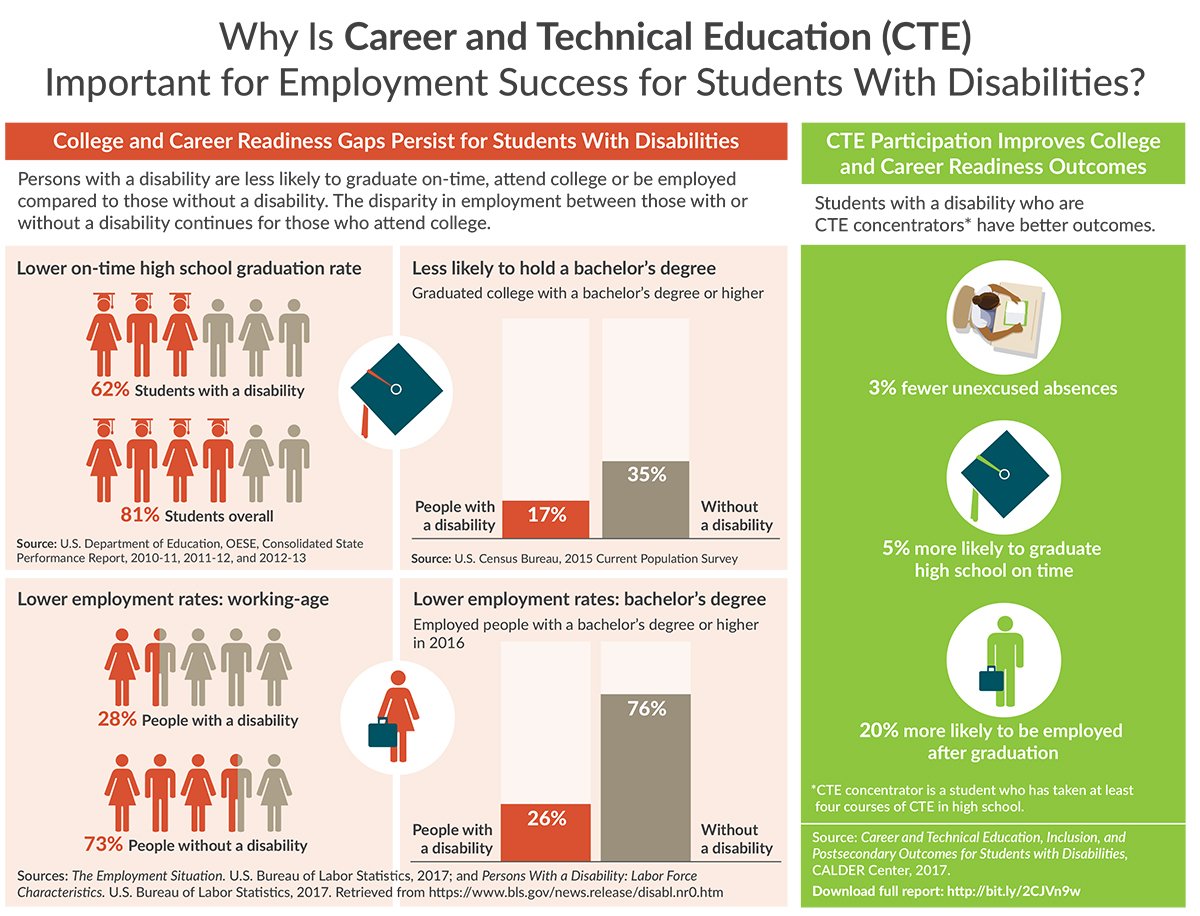
The pathway between high school, postsecondary education, and employment can be quite daunting and challenging for students with Autism Spectrum Disorder (ASD). Fortunately, nowadays, students have options when meeting their graduation requirements during high school or after graduation. Traditionally, students choose to attend a two-year college, a four-year university or go directly into employment. Today, young adults are choosing the Career and Technical Education (CTE) track while in high school, which also allows them to earn a standard high school diploma.
As students begin to prepare for life after high school, in the current competitive job market, choosing the CTE path affords students who do not want to attend a two or four-year college or university the option to learn a profession and provides invaluable training. A CTE provides career preparatory programs that allow students to pursue their individualized interests and help them reach their goals. It also prepares them for a highly competitive job market environment external to traditional schooling.
When students choose CTE, they receive technical skill training, which can help them attain specific employment and credentials, such as a career certificate, applied technology diploma, journeyman’s license, college credit certificates, associate in science (A.S.) and/or associate in applied science (A.A.S.) degree.
Project10, a program funded by the Bureau of Exceptional Education and Student Services (BEESS), within the Florida Department of Education (FDOE), provides an informational guide entitled: “Career and Technical Education Experiences in Middle School, High School, and Postsecondary Education.” If you are interested in pursuing a postsecondary technical path, we encourage you to read more about CTE’s benefits at the link below.
http://project10.info/Documents/CTE_SSTIC_Product_with_CTE_Option_4.17.2020.pdf
